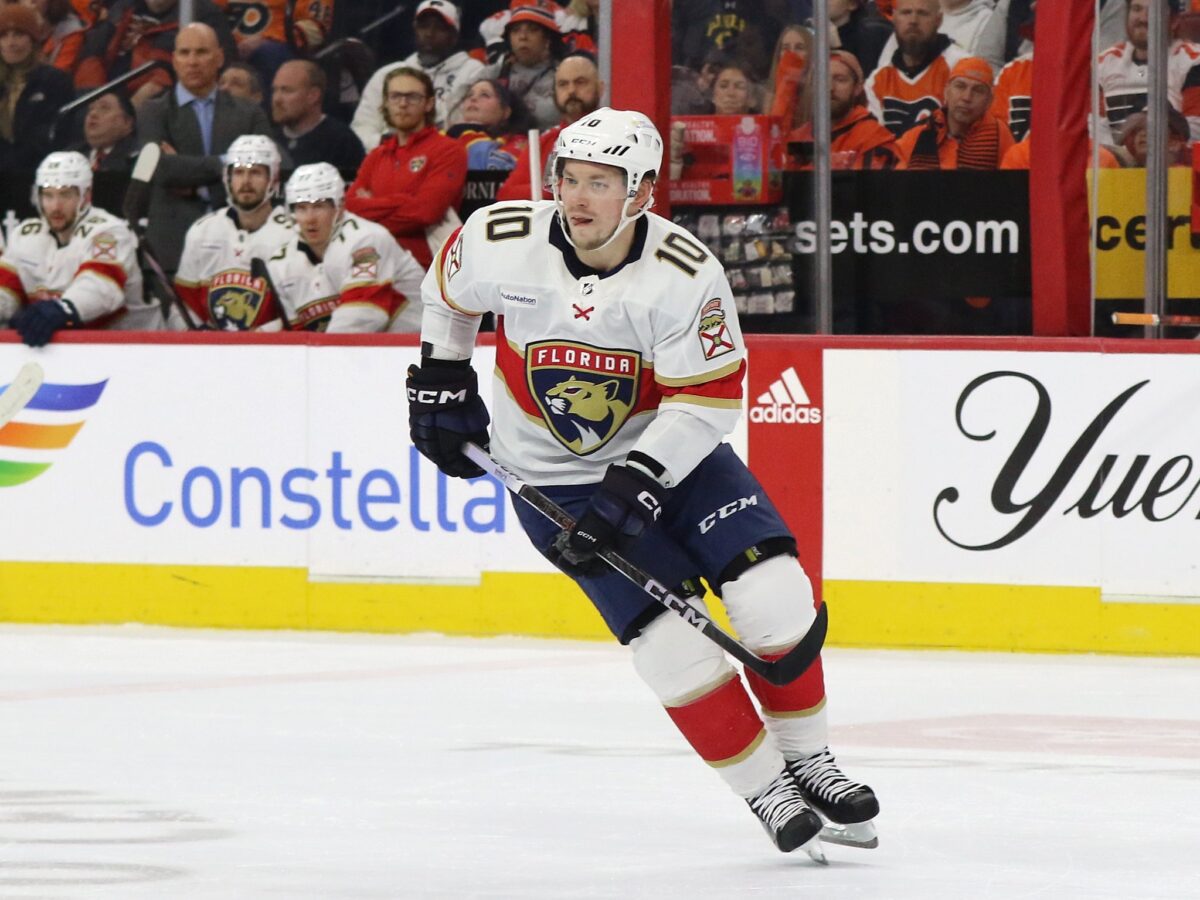One of Detroit Red Wings general manager Steve Yzerman’s offseason priorities was to improve scoring depth. This mainly stemmed from Detroit’s inability to maintain their offensive firepower when Dylan Larkin was out of the lineup.
Yzerman added a few forwards this offseason to both address organizational needs and this priority. In addition to bringing back Patrick Kane and Christian Fischer, Yzerman also signed Vladimir Tarasenko and Tyler Motte.
Was this enough to accomplish the objective? Let’s dive in and find out.
Red Wings’ 2024-25 Forward Depth
The chart below outlines Detroit’s projected forward lines. There will undoubtedly be changes throughout the season – this is just the starting point.
| LW | C | RW |
| Alex DeBrincat | Dylan Larkin | Patrick Kane |
| Lucas Raymond | J.T. Compher | Vladimir Tarasenko |
| Michael Rasmussen | Andrew Copp | Christian Fischer |
| Jonatan Berggren | Joe Veleno | Tyler Motte |
As the roster is currently constructed, the Red Wings have two formidable scoring lines, a checking line, and a specialist “fourth line” with offensive upside. There’s certainly scoring depth with this group.
Tarasenko is an upgrade over David Perron in the top six, and his shooting prowess would complement Lucas Raymond well. There is some concern with his (and Kane’s) defensive play at five on five, though. That said, it’s expected that the Red Wings will make strategy adjustments to be a better defensive team overall, which could address this to a degree.

In addition, Detroit’s young forwards are expected to take a step forward in 2024-25. This means more production from Raymond, Jonatan Berggren, and Joe Veleno. The latter two will likely get sheltered deployments at even strength and spend time on the second power play unit.
Overall, this is a depth forward lineup. The key, though, is to stay healthy. Sure, the Red Wings have Marco Kasper, Carter Mazur, and Nate Danielson a quick drive away in Grand Rapids, but an injury (or two) in the top six could be costly.
Without Larkin, the Red Wings went 4-10-0 in 2023-24, and averaged 2.62 goals per game. Alternatively, they averaged 3.5 goals per game when he was in the lineup.
While Tarasenko does improve the top six and the Red Wings are dangerous as a complete unit, there is significant risk in another drop-off should Larkin miss time. Once again, this would mean Veleno or Andrew Copp centering one of the top two lines, and that didn’t pan out so well last year. Veleno is expected to be a better forward in 2024-25, but not top-six material.
Related: Red Wings’ Question Marks Heading Into the 2024-25 Season
Heading into the season, the Red Wings need to conduct contingency planning to determine their strategy if Larkin gets hurt. This wouldn’t just be lineup changes, but strategy adjustments for the entire team as well.
Final Word
Two things can be true: Detroit improved their offensive depth as they set out to this offseason and they didn’t improve their depth enough. Losing Larkin for any amount of time in 2024-25 would be a major blow for the Red Wings.
That said, it’s easier said than done to add a depth center that can jump into the top six. Perhaps instead of Tarasenko, the Red Wings could have added someone with positional versatility, such as Pavel Buchnevich, Yegor Sharangovich, Matt Duchene, or Sean Monahan. But again, easier said than done.
Related: 3 Key Insights Into Detroit’s Offseason Strategy
Still, we should see an improved team offensively in 2024-25, with Larkin, Kane, Raymond, Tarasenko, Alex DeBrincat, and J.T. Compher leading the charge.
